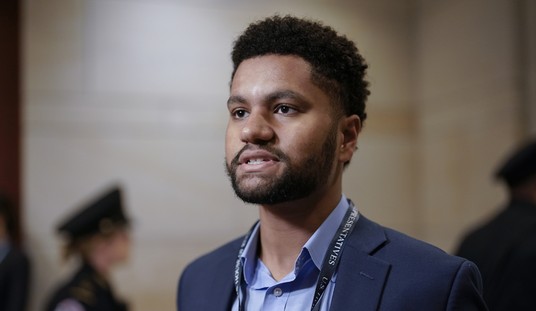There are a number of parents who are familiar with having been pulled discreetly aside by a teacher or doctor and told that their child’s disruptive behavior needed to be treated with a psychotropic or psychiatric medication.
As a licensed psychotherapist, I treat children whose parents have turned to me for help after having been referred by a teacher or doctor with the recommendation that they put their child on drugs to control their behavior.
Typically, the behavior that the school or physician is concerned with involves conduct that interrupts the flow of the teaching process in the classroom. This behavior could be speaking out of turn, squirming in the chair, getting out of a chair without permission, or other irritating behavior.
There are other instances in which the behavior could be considered more egregious and in some extreme situations, a threat to the safety of others, but this is usually not the case.
Some parents, without questioning the judgment of the education or medical professional, quickly acquiesce and agree to place their child on medication without first considering other viable options. Parents may find it easier to give in rather than to deal with an unhappy teacher.
Other parents may reject the unsolicited opinion, and believe that they, not the professionals, have the last word in making decisions which impact their children. In most cases, this is true.
However, for one Detroit mother in 2011, this was not the case.
A mother of a previously homeschooled child, who had severe reactions to immunizations, subsequently lost custody of her daughter to Child Protective Services, when she sought a second medical opinion and refused to continue treating her daughter with a powerful psychotropic medication that had been prescribed.
The mother had been told that the sudden change in her daughter’s behavior was due to a mental illness and not to the severe reactions she experienced because of immunizations.
The mother, who had originally complied with giving her daughter the psychotropic drug, ceased giving it and sought a second medical opinion, when her daughter had a reaction to the psychotropic drug, as well.
Although custody was regained within several weeks, criminal charges for the 10-hour standoff against officials who were trying to remove her daughter and allegations that the mother fired a firearm during this event, were not dropped until some three years later.
Fortunately, the daughter in this case, had a mother who was willing to advocate for her rights against officials who were determined to drug her.
Sadly, advocacy is not often available for one of the most vulnerable groups in America.
America’s foster youth, which estimates put at approximately 400,540 in foster care at any one point, have seen the number of prescribed psychotropic medications increase in recent years, with seemingly little or no concern from advocates or the public in general.
In 2011, it was reported that foster children in five states, Florida, Massachusetts, Michigan, Oregon and Texas, received alarming amounts of psychotropic drugs.
The Government Accountability Office report concluded that thousands of foster children were being prescribed psychiatric medications at doses higher than the maximum levels approved by the Food and Drug Administration in these five states alone.
The report went on to state that hundreds of foster children received five or more psychiatric drugs at the same time despite absolutely no evidence supporting the simultaneous use or safety of this number of psychiatric drugs taken together.
The report also found, that especially for children, antipsychotics were, by far, the most prescribed.
Antipsychotics are used in the treatment of psychosis, especially schizophrenia, and acute or severe states of mania, depression or paranoia.
The report concluded that the reason for the high rate of use of antipsychotics by children under the care of the child welfare system was not because they were diagnosed with a psychotic disorder, but rather it was due to their ability to make the children docile and easier to manage. In extreme cases, the children became almost zombie-like.
Additionally, the report revealed other causes for concern in prescribing antipsychotics. The children can become suicidal and experience a general worsening of their condition, including depression, anxiety, hostility, aggression, impulsivity and mania.
Finally, it was also noted that if foster parents objected to the prescribed medication then they were likely threatened with having the children removed from their care. The threat of removal would make any attempt at advocacy on these children’s behalf almost impossible.
In 2014, approximately three years since the last outcry over the use of psychotropic drugs for foster youth, California is stepping up and is ready to lead the charge to end the use of psychotropic drugs for the purpose of controlling the behaviors of its foster children.
A recent investigation, conducted by a San Francisco newspaper, found that nearly one in four adolescents in the nation’s largest child welfare system is prescribed at least one psychiatric medicine. This is three and one-half times the rate for all teens.
Some prominent lawmakers in the state, including Sen. Jim Beall, D-San Jose, called for the end of such practices and demanded that the state quit spending tens of millions of taxpayer dollars toward this purpose.
Additionally, lawmakers expressed outrage over the fact that drugs were being prescribed to control these children’s behaviors rather than to treat any mental illness.
It is estimated that approximately 60 percent of foster youth prescribed psychotropic drugs in California are being given antipsychotics.
It was further revealed that the state spends more on psychiatric drugs for foster children than on any other type of drug.
An analysis, disclosed that over a 10 year period of Medi-Cal data, psychiatric medications accounted for 72 percent of spending on the 10 most expensive drug groups for foster children, topping $226 million.
Sen. Ted Lieu, D-Redondo Beach, heads the committee that oversees the state medical board. He has requested that information be provided to demonstrate whether doctors have been practicing within the reasonable standard of care when they prescribe medications to either treat illnesses or to control behavior.
Will Lightbourne, head of California’s Department of Social Services, believes there’s no simple way to end the pattern of thousands of foster children spending much of their youth drugged into malleability.
I vehemently disagree with Lightbourne. The practice of drugging foster children to control their behaviors is a practice that can and should be stopped immediately.
There are other more feasible and humane choices that are available for Lightbourne’s use today.
The hiring of behavioral therapists or other licensed psychotherapists, who are trained to work with youth and foster parents in effectuating positive change in behaviors, offers a much more positive and cost-effective alternative to drugging children into drooling droids.
Our priority must be in protecting those that do not have a voice to bring attention to this maltreatment.
Hopefully, California will lead the way in meaningful discussions, which will culminate into permanent changes.
Our foster children can’t afford to wait another three years until the issue is once again brought to the forefront. California and the nation must act now to end this immoral practice once and for all.








Join the conversation as a VIP Member